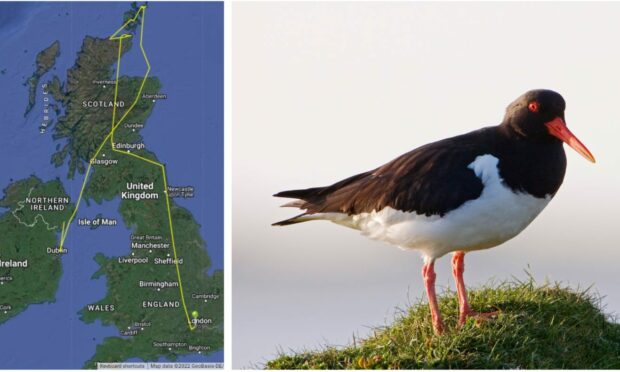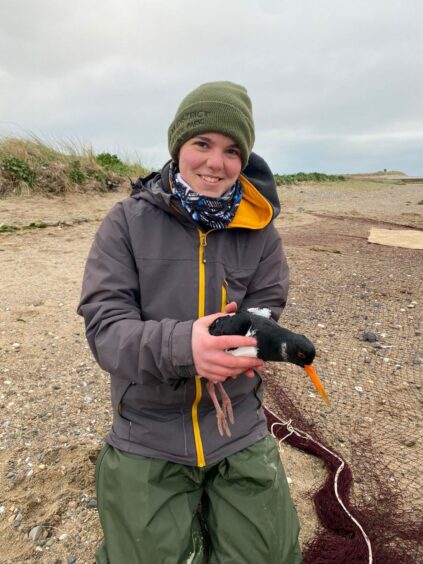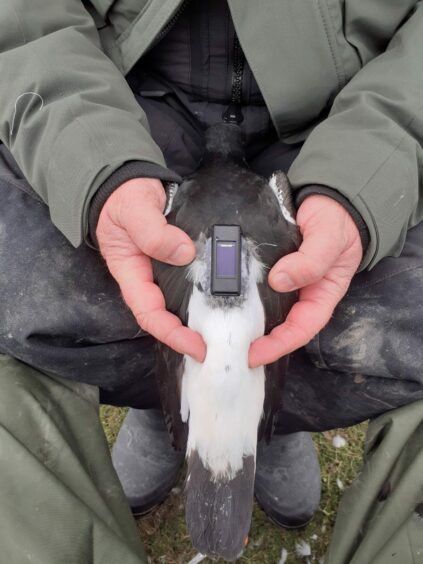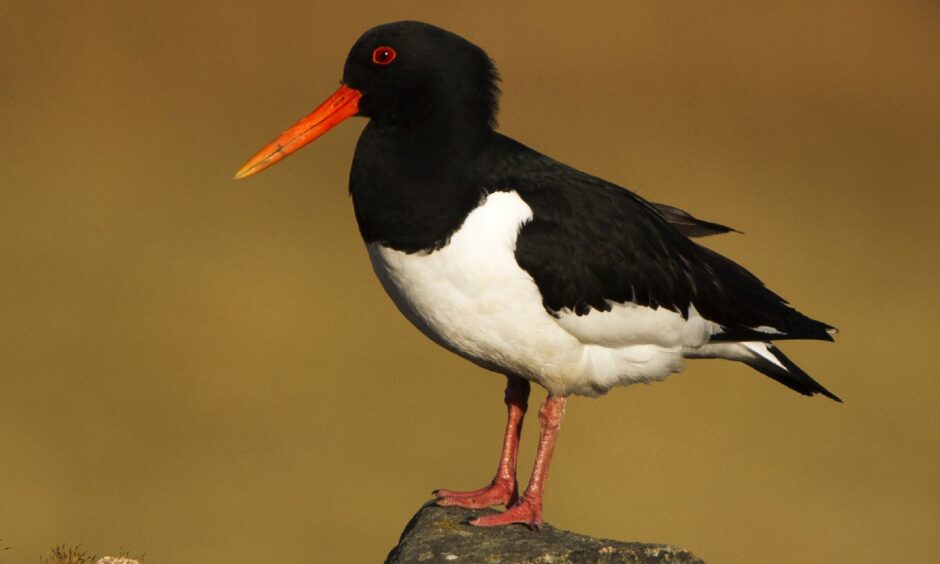The mystery of how a bird tag travelled from an Orkney island to a residential street in London has now been solved.
The £1,000 device was attached to an oystercatcher as part of a research project in Dublin, before it naturally fell off when the bird migrated to Orkney.
Researchers could see it lay on a Sanday beach from April 7 until the end of May – before making the “shocking” 750-mile journey to west London.
Visiting a campsite and pizza restaurant on the way, they believed a holidaymaker innocently picked up the device and offered a £100 reward for its return.
Thanks to a number of radio interviews, articles and tweets, the tracker has now been found and the reward will be sent to Ealing resident Mike German, who came across it during a holiday to Orkney last month.
‘A massive journey’
PhD student Steph Trapp, who is carrying out research into oystercatcher’s winter migration habits, said they were grateful that Mr German got in touch so quickly after he realised what he had brought home.
“It’s been on a massive journey,” she said. “It’s pretty crazy.”
“We were contacted last week after one of the radio interviews by someone who was local to Ealing who had been listening, and they very kindly offered to help out”, she continued.
“We made some little leaflets and she printed them out and then posted them through some letter boxes on the street that we knew the tag was on.
“She did that on Saturday and by that evening my supervisor, Stu, got an email from the man who had the tag, saying ‘I think this is me’.
“We were very grateful to him for getting back to us so fast. He thought it might have been something off a ship’s buoy or a mobile phone, but it didn’t occur to him that it could have been a tracker.”
‘Scattered all over the UK and beyond’
The 23-year-old, who is based in Cornwall, explained the trackers are part of a study being carried out with Dublin Bay Biosphere and College of Life and Environment at the University of Exeter.
The transmitters – 10g boxes powered by solar panels – upload data via the 3G network every day and can be reprogrammed for any future fieldwork.
She added: “We have no control over where the birds go, but we did think most of the tags would drop off while the birds were still in Dublin.
“A lot of the birds migrated earlier than expected, so we’ve got them scattered all the way across the UK and beyond. Someone found one on the Faroes, and other on Orkney. And we have some people looking on Skye and Shetland, and all the way over on Iceland as well.
“The good thing about getting so many of the tags back means we can increase our sample size and get some better insights into what the birds are actually doing.”
‘I never thought it was a tracker’
Mr German shared his side of the story with BBC Radio Orkney this morning, and said he was “blown away” when he find out how far news of the travelling tag had spread.
He told the show: “I found it near a fence post on Sanday when we spent a morning there looking round the dunes and walking across the beach.
“It was a dull sort of day, but it had been very blustery the night before, so we thought we’d get some fresh air and make the most of Sanday – which is a beautiful island.
“I just suddenly saw this item, and I thought ‘Ooh, I wonder what that is’. I just thought it was something that had dropped off a boat’s buoy or something. I never thought it was a tracker.
“I picked it up and put it in my pocket, then in my little bag with the shells I’d picked up from the beach.”
Mr German was oblivious to what he had picked up until one of the leaflets came through his door, and he wasted no time in getting in touch with the research team.
He now plans to post the tag back to the university via special delivery so he can “track it” and make sure it can be used for research once again.



